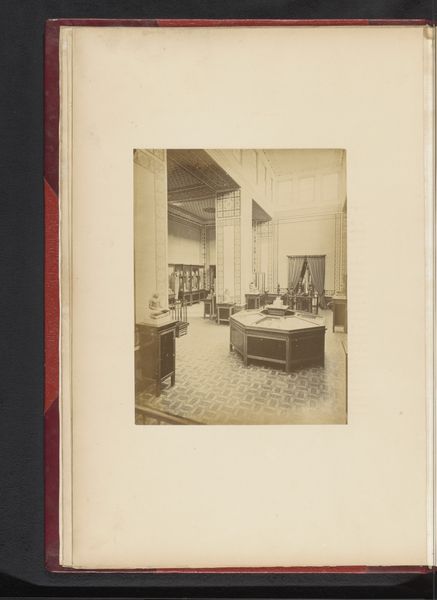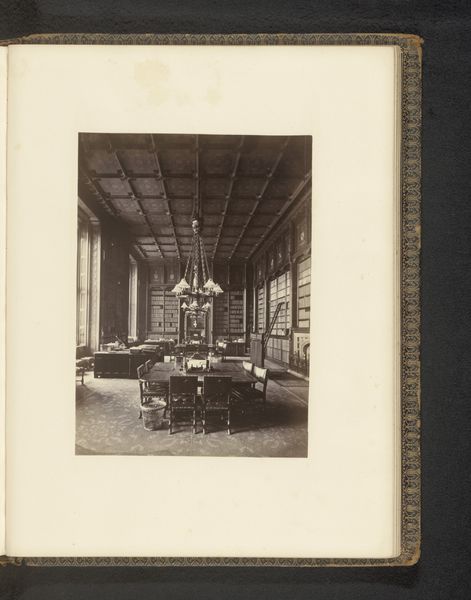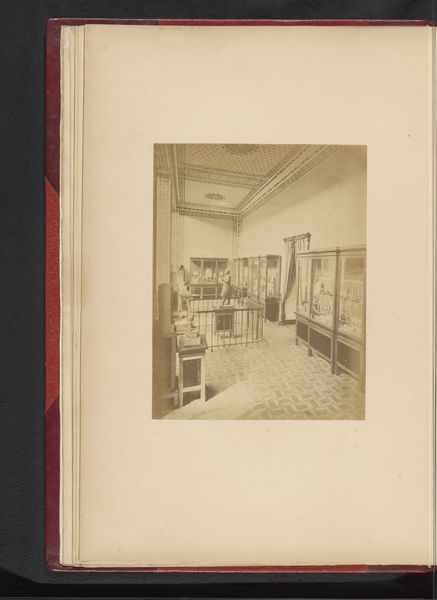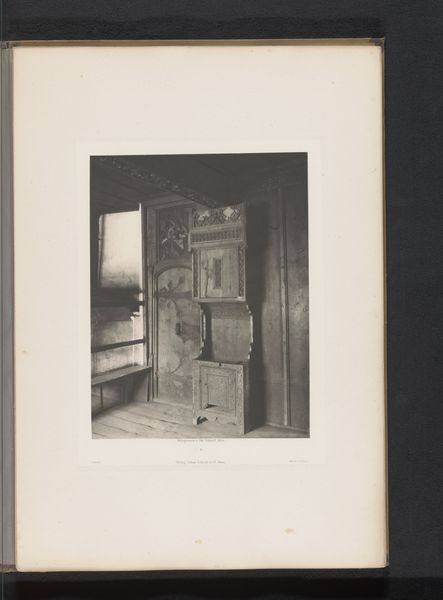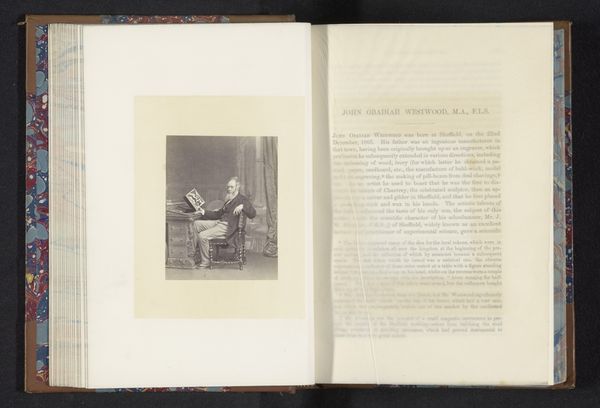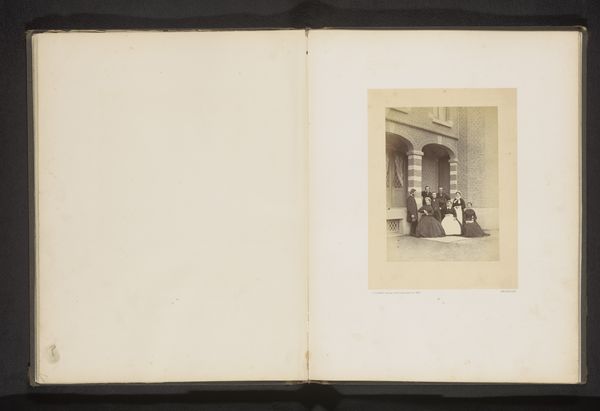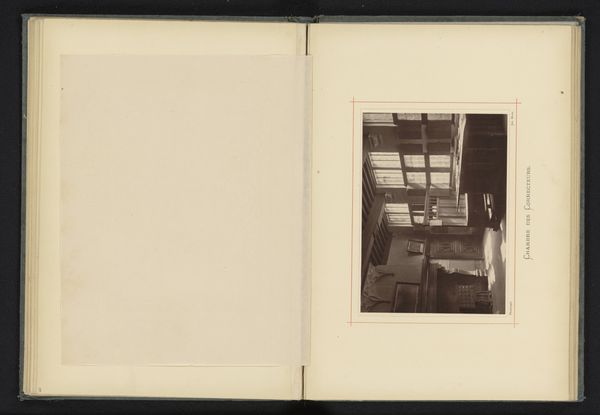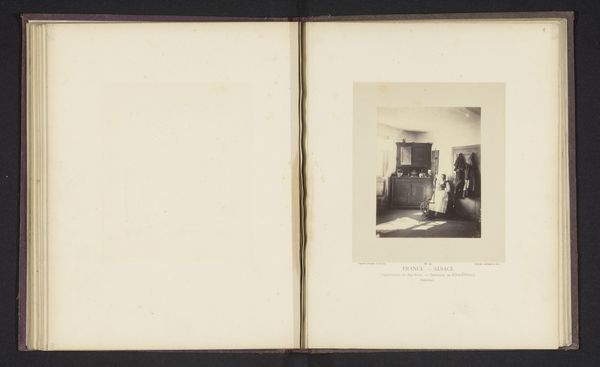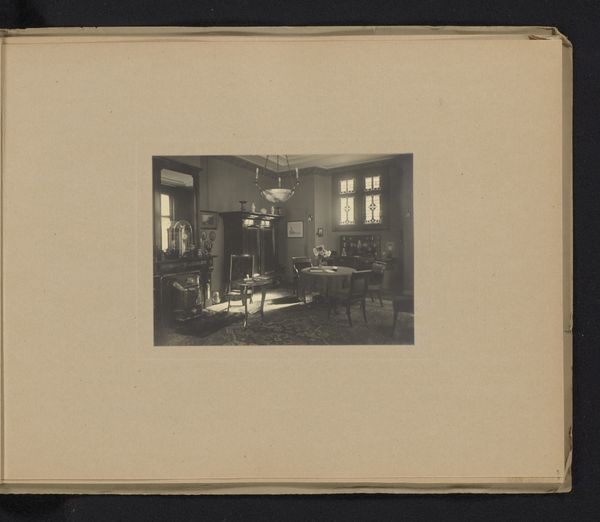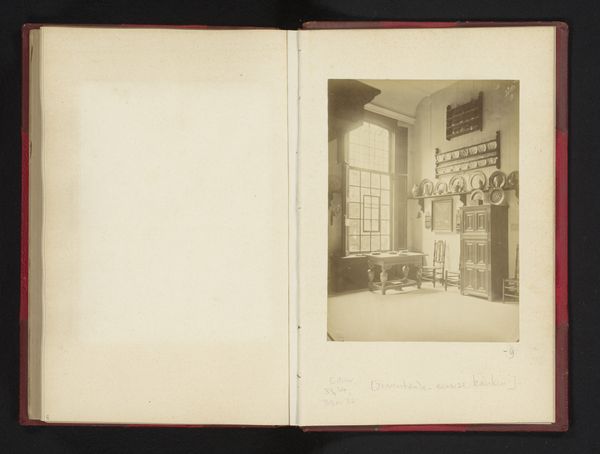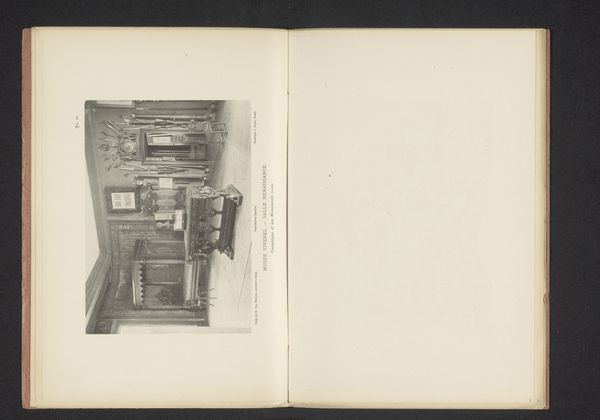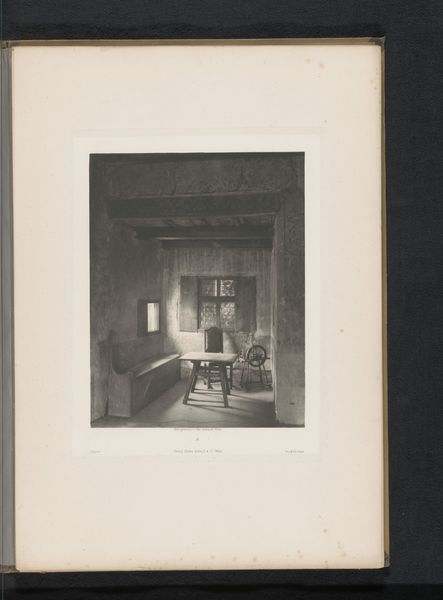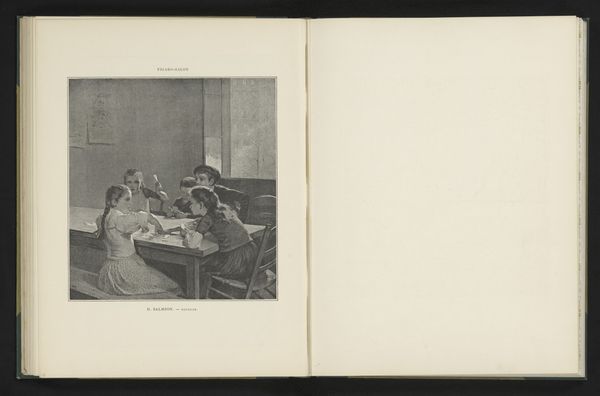
print, photography
# print
#
photography
#
realism
Dimensions: height 165 mm, width 117 mm
Copyright: Rijks Museum: Open Domain
Editor: So, here we have "Interieur met een bureau," or "Interior with a desk," a photographic print by Christiaan Johan Neeb, created before 1897. There's something very still and posed about it. The desk and chair are carefully arranged. What strikes you about this image? Curator: Immediately, I’m drawn to the textures and how they speak to social class. Notice the patterned wallpaper – mass-produced, most likely. And then the desk itself: its manufacture suggests industrial processes democratizing access to furniture previously reserved for the elite. How does Neeb's choice of photography as a medium fit into this exploration? Editor: That's interesting. Photography made image-making accessible, but it was still a specific *kind* of access. It wasn't as ubiquitous as it is today. Curator: Exactly! The print itself is a manufactured object. Think about the chemicals used, the paper produced in mills, the labour involved in every step. Even this ‘realistic’ depiction is a product of very specific materials and production methods shaped by the society in which Neeb operated. Editor: So, looking at the *means* by which this image came into being reveals its meaning and broader context? Curator: Precisely. And don't forget the context of display! This photograph exists as a print in a book. What does it tell us about the culture of image consumption and knowledge dissemination at the time? Was this a luxury item or something intended for a wider audience? Editor: I see now that looking at materials and modes of production changes the entire reading of what seems, at first, like a simple interior shot. Thanks! Curator: Absolutely. Art history isn't just about aesthetics or the artist’s intentions. Examining the *making* of art reveals a whole network of social and economic forces at play.
Comments
No comments
Be the first to comment and join the conversation on the ultimate creative platform.
